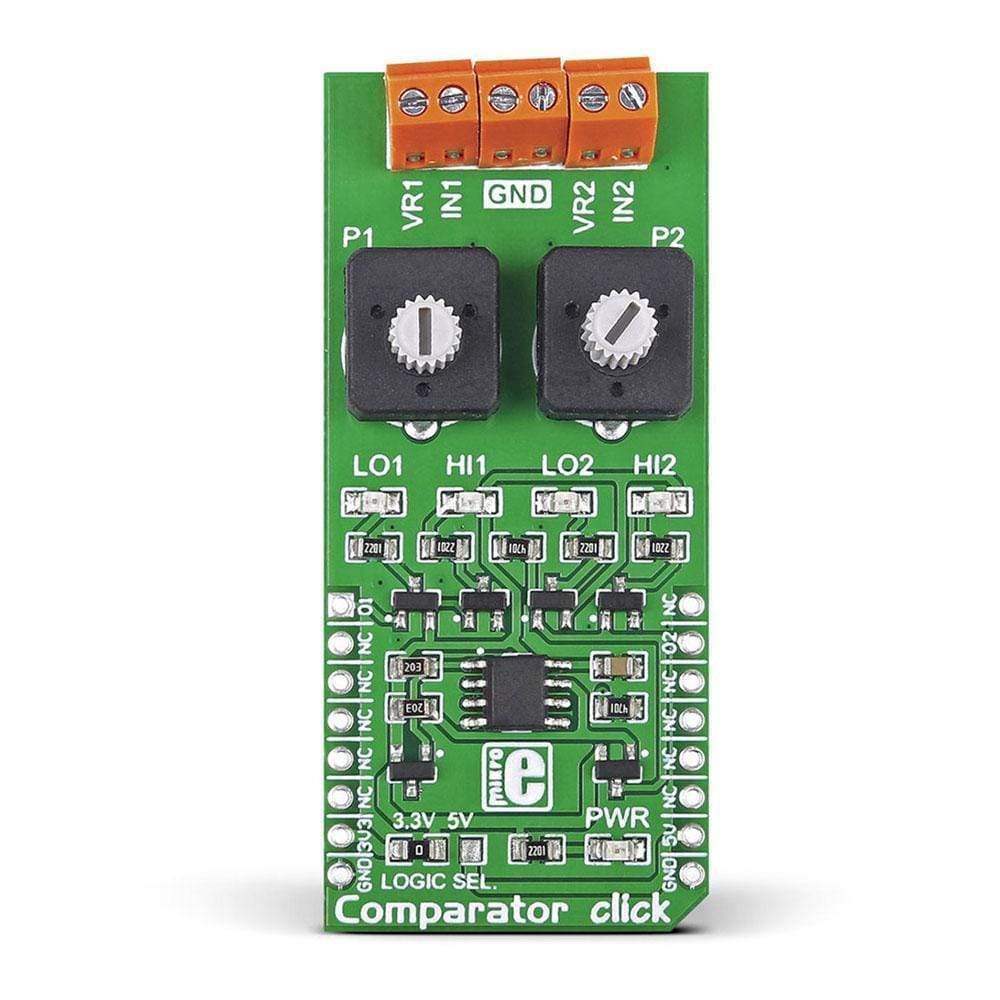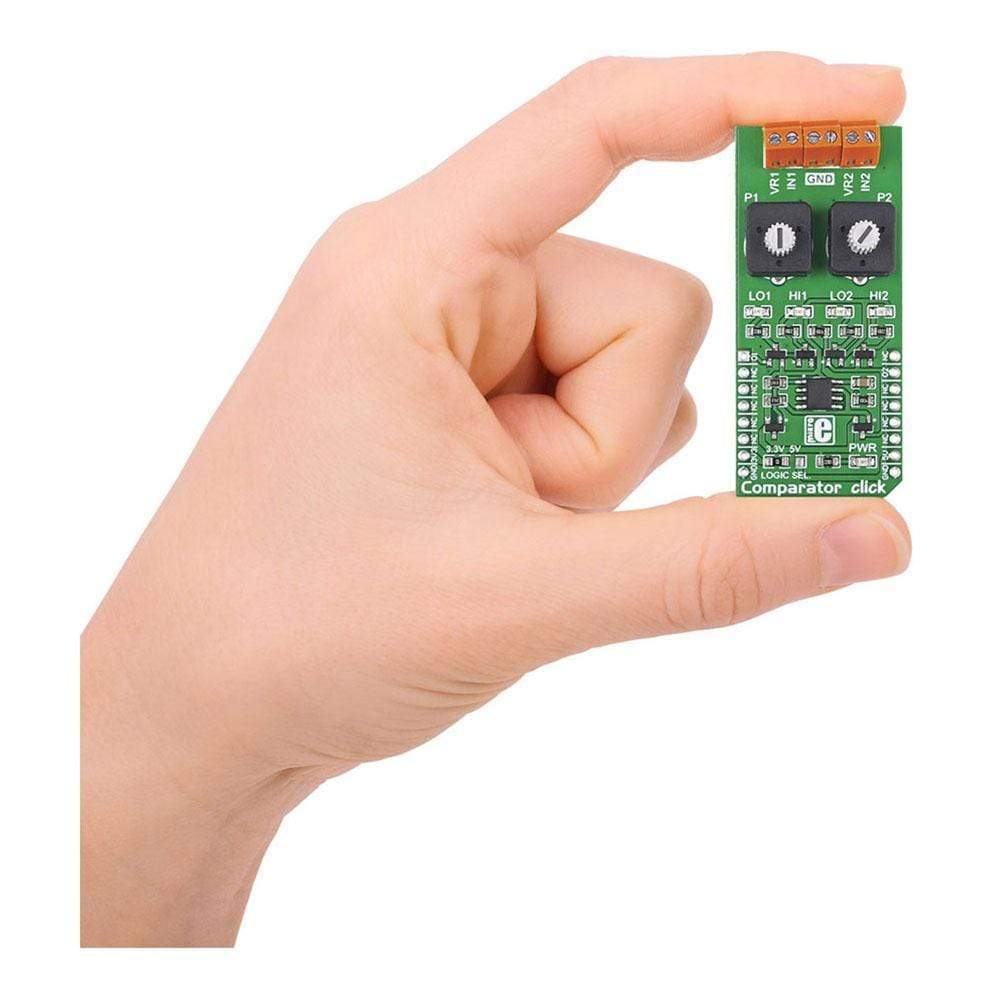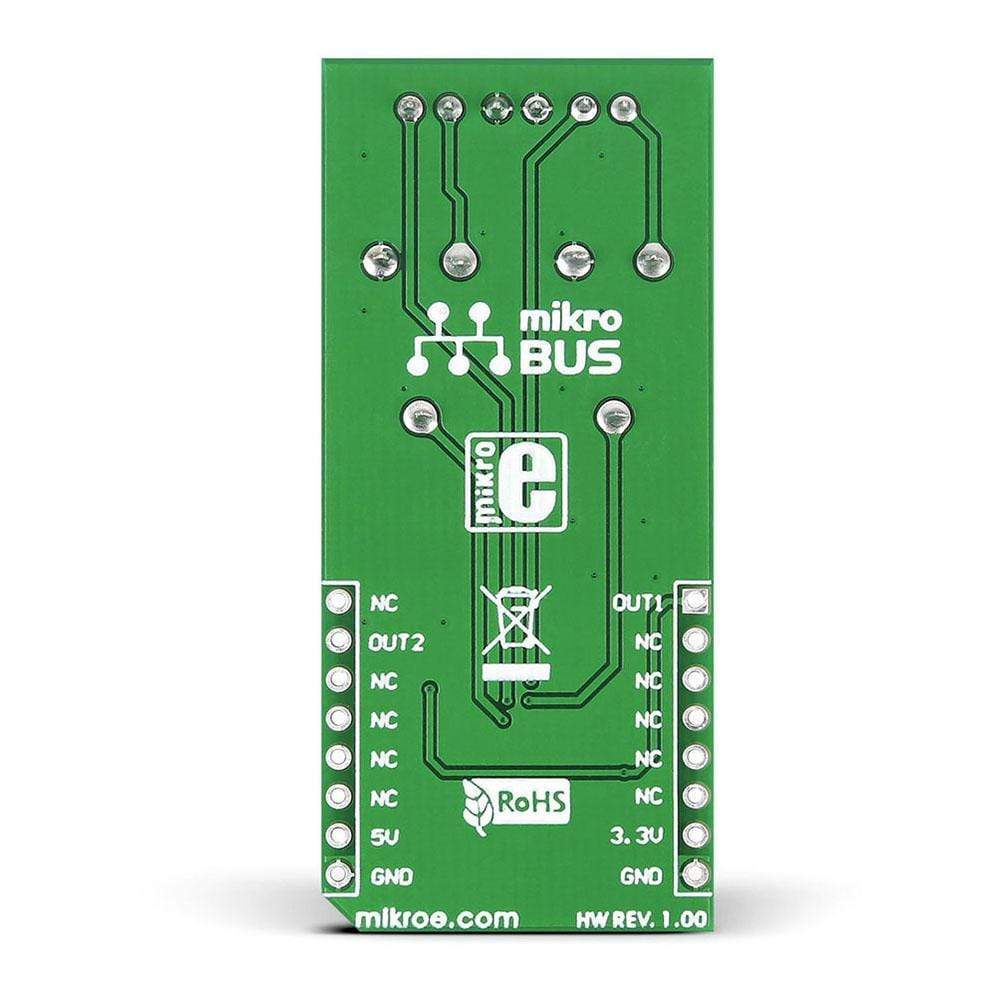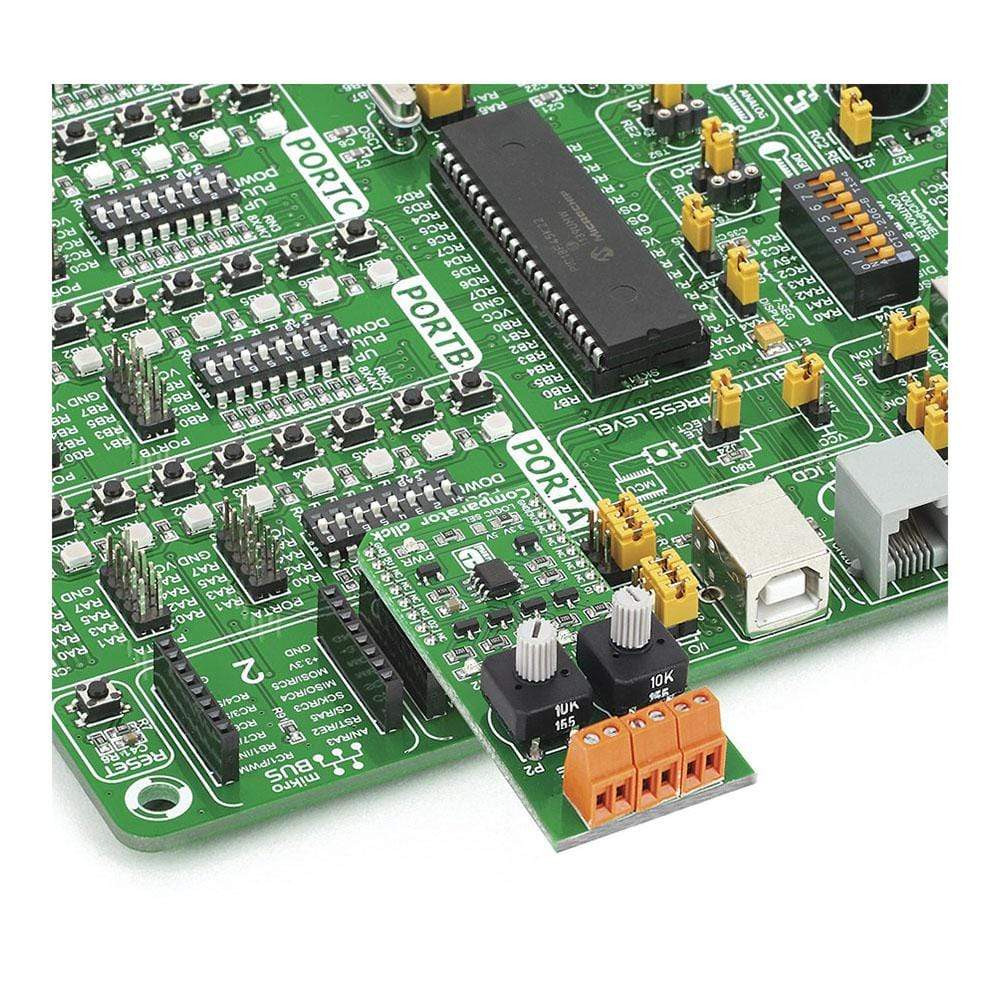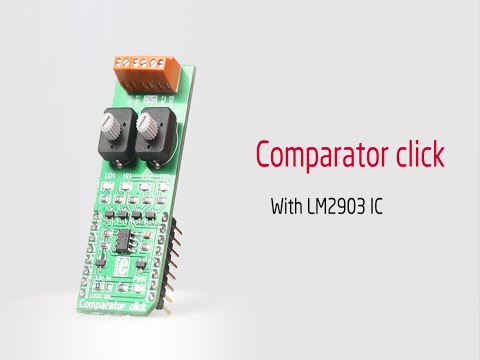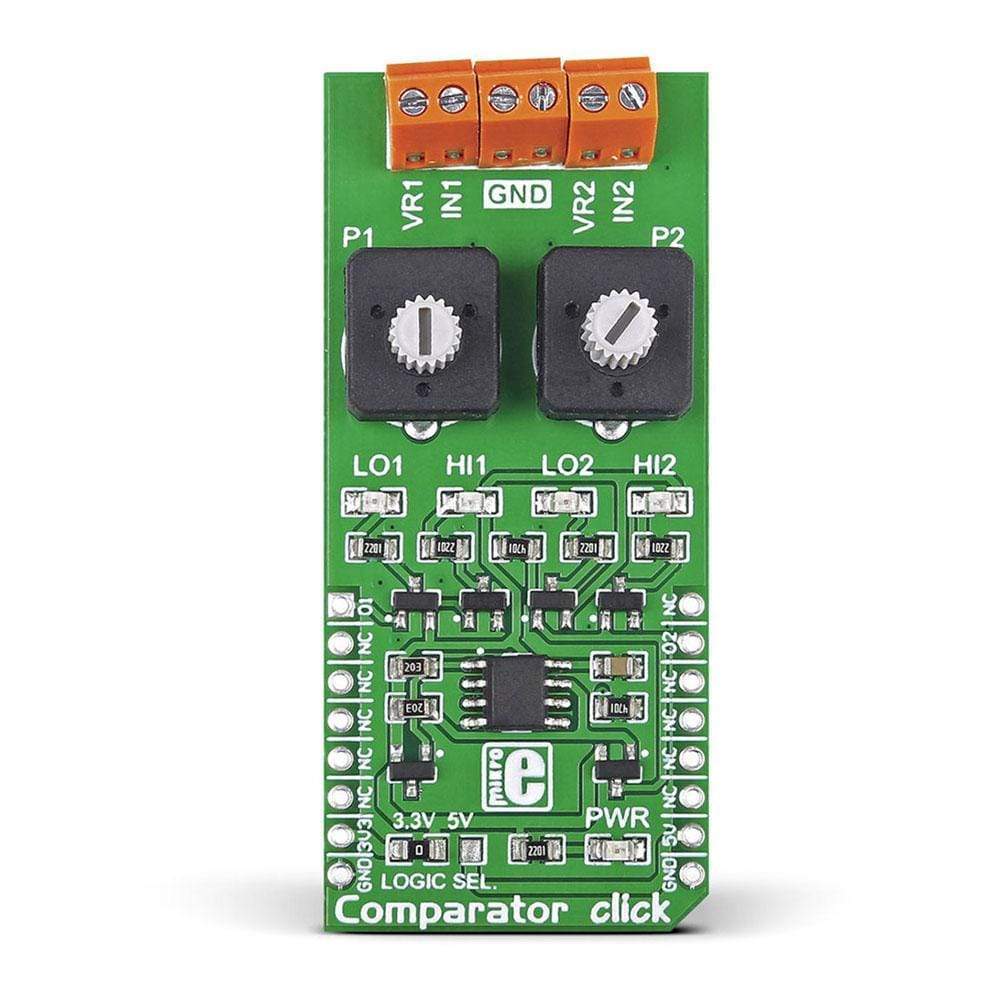
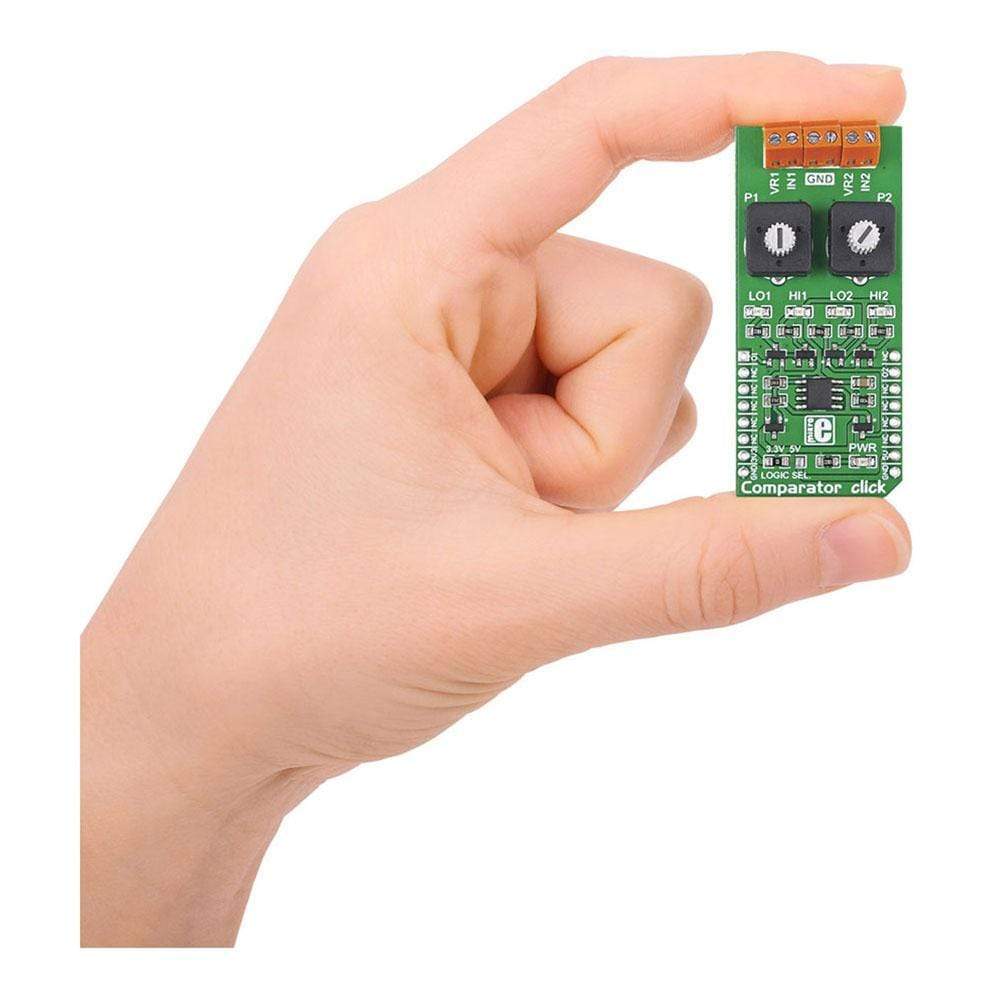
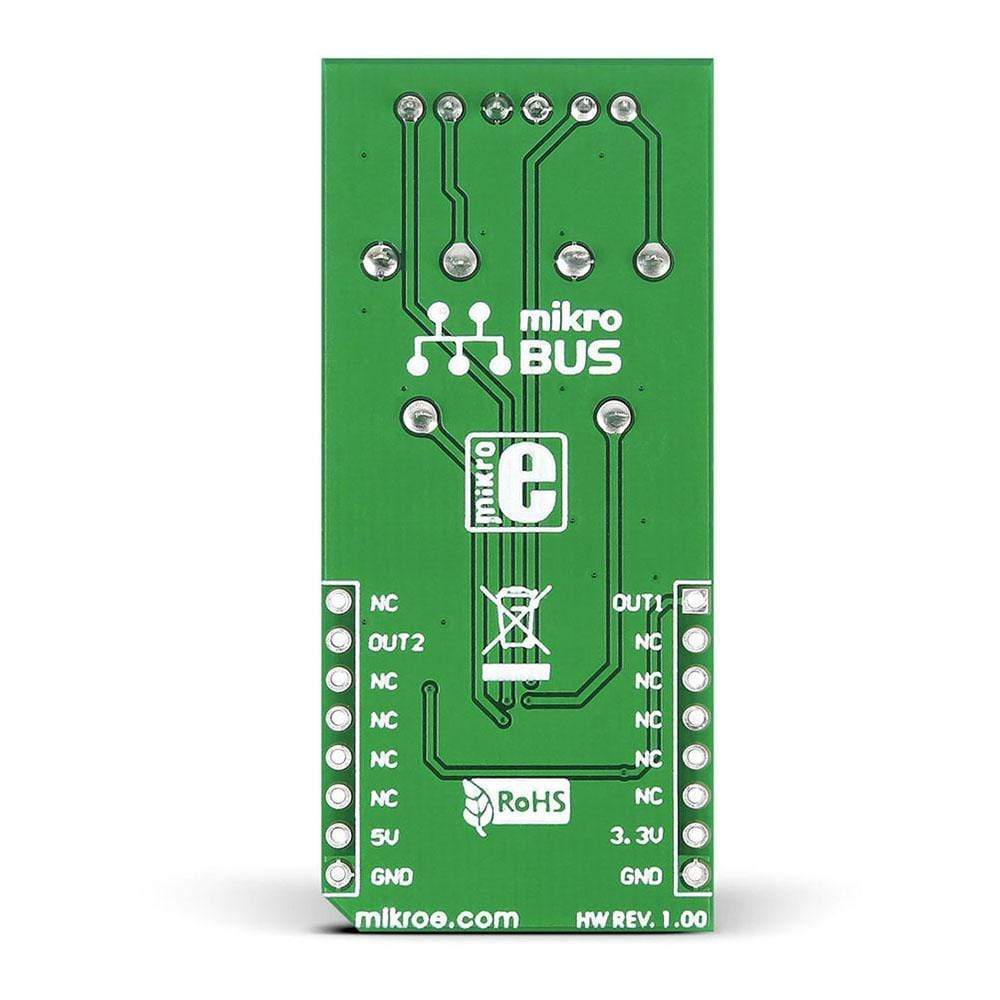
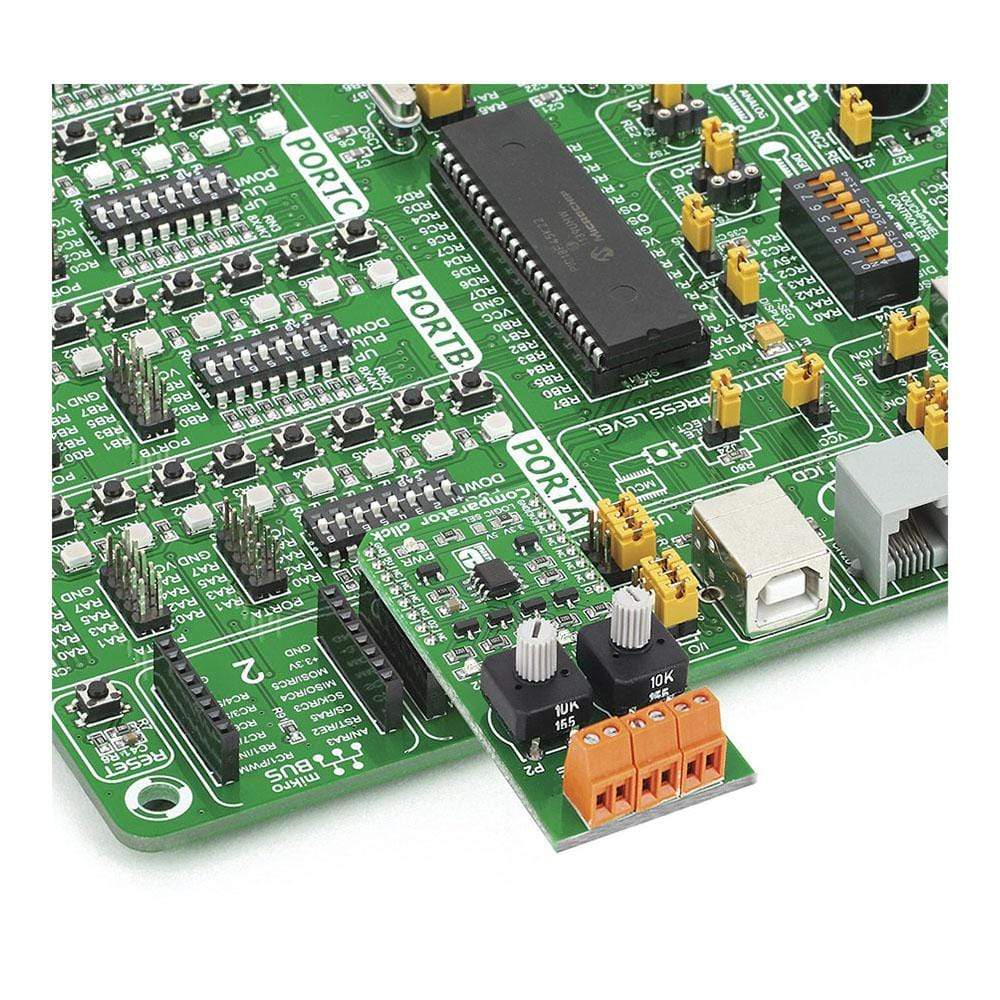
Overview
The Comparator Click Board™ from MikroElektronika is a voltage comparator on a Click Board™ add-on board carrying an LM2903 precision voltage comparators. This LM2903 IC features two independent voltage comparators, two pairs of screw terminals (additional two screw terminals are for GND connections), and two potentiometers.
It can be used with either a single or dual power supply over a wide range of voltages. The screw terminals allow the user to connect separate inputs, while the two potentiometers, placed between the screw terminals and the IC, configure the setpoint voltage. Each input has its own interrupt pin on the socket, i.e., one through the MikroBUS INT pin, the other in place of the default MikroBUS AN pin.
The Comparator Click Board™ is designed to use either a 3.3V or a 5V power supply.
Downloads
Le Comparator Click Board™ de MikroElektronika est un comparateur de tension sur une carte complémentaire Click Board™ comportant un comparateur de tension de précision LM2903. Ce circuit intégré LM2903 comprend deux comparateurs de tension indépendants, deux paires de bornes à vis (deux bornes à vis supplémentaires sont destinées aux connexions GND) et deux potentiomètres.
Il peut être utilisé avec une alimentation simple ou double sur une large plage de tensions. Les bornes à vis permettent à l'utilisateur de connecter des entrées séparées, tandis que les deux potentiomètres, placés entre les bornes à vis et le circuit intégré, configurent la tension de consigne. Chaque entrée possède sa propre broche d'interruption sur le support, c'est-à-dire une via la broche MikroBUS INT, l'autre à la place de la broche MikroBUS AN par défaut.
Le Comparator Click Board™ est conçu pour utiliser une alimentation 3,3 V ou 5 V.
| General Information | |
|---|---|
Part Number (SKU) |
MIKROE-1915
|
Manufacturer |
|
| Physical and Mechanical | |
Weight |
0.03 kg
|
| Other | |
Country of Origin |
|
HS Code Customs Tariff code
|
|
EAN |
8606015076614
|
Warranty |
|
Frequently Asked Questions
Have a Question?
Be the first to ask a question about this.

